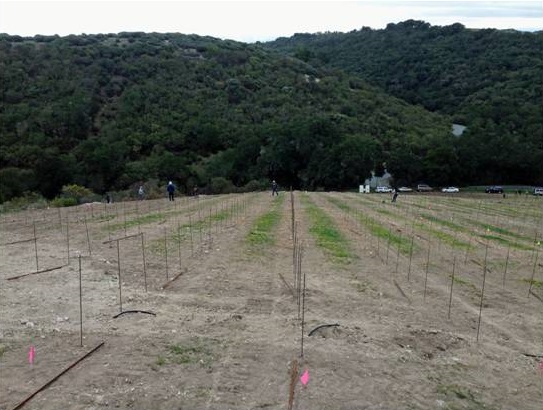The where and the what of planting a wine grape vineyard is a bit of a chicken and egg discussion. You can decide what varietal you want to grow and then find the best place to plant it. The other approach is to find the place you want to put a vineyard and figure out what varietal will best prosper there. The former is a decision based on market forces and your personal vision of your winery. The latter is a more romantic ideal of making the best possible wine from your place regardless of any other factors. As things usually move forward, our decision was based in some blend of both schools of thought.
The parcel of land that we are currently planting at Calcareous is a seven-acre steep hillside that ranges from southeast facing to southwest facing. The soil on the slope is almost entirely Balcom-Calleguas complex, a very high-calcium carbonate soil type that is actually fairly rare in Paso Robles. We have one other five-acre section of our current vineyards planted on this same soil type, the Syrah and Cabernet Sauvignon from there are my favorite blocks to harvest and form the backbone of our Devil’s Canyon Syrah and Lloyd Bordeaux blend. Knowing this, we felt planting Syrah and Cabernet Sauvignon would be sure bets. The third varietal, Petit Verdot, was selected more from getting to know the exact feel of the new area.
Traditionally, most hillside vineyards are planted on south/southwest facing slopes. This is because wine grapes need to reach an elevated state of ripeness during fall, thus the sunniest aspect gives you the best chance to achieve ripeness before inclement fall weather arrives. Paso Robles is not a traditional place, thus it opens up possibilities. Achieving ripeness is rarely an issue here, quite the opposite is generally the concern during harvest. Thus, when looking at the slopes and aspects of this land to be planted, I was excited about the east-facing segment of the slope. Getting direct sun in the cool morning air, and then being shielded from the direct sun of late afternoon seemed the perfect conditions for Cabernet Sauvignon. The hope is that this will allow a more gradual ripening curve that provides for extended hang time. Sugar can accumulate faster than tannins ripen, so if Cabernet ripens too quickly, it can create a juxtaposition between big fruit and course tannin that can be confusing on the palate. By extending time spent on the vine, more complexity can occur amongst the tannins in the skins so the final wine becomes more cohesive without becoming overripe and alcoholic. So, the final decision is to plant Cabernet Sauvignon on the east/southeast facing slope, the more tannic and later ripening Petit Verdot on the south facing slop and finally the warmest southwest exposure will be planted to sun worshiping Syrah.
Next time I’ll discuss one of the seemingly most complicated questions in planting a vineyard, the selection of clone and rootstock.
Cheers,
Jason Joyce


